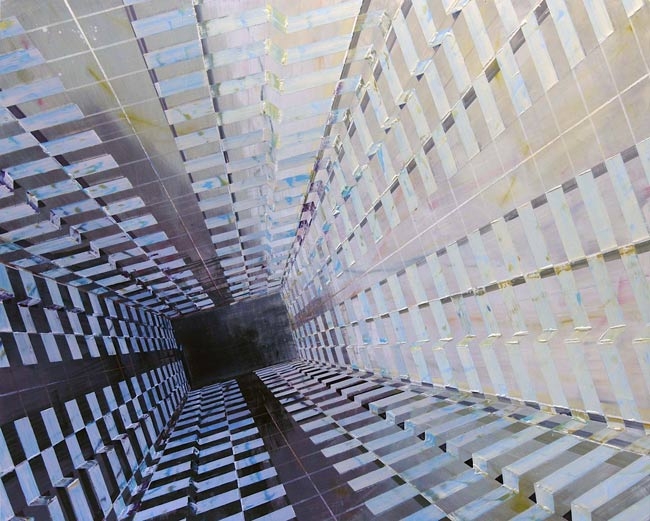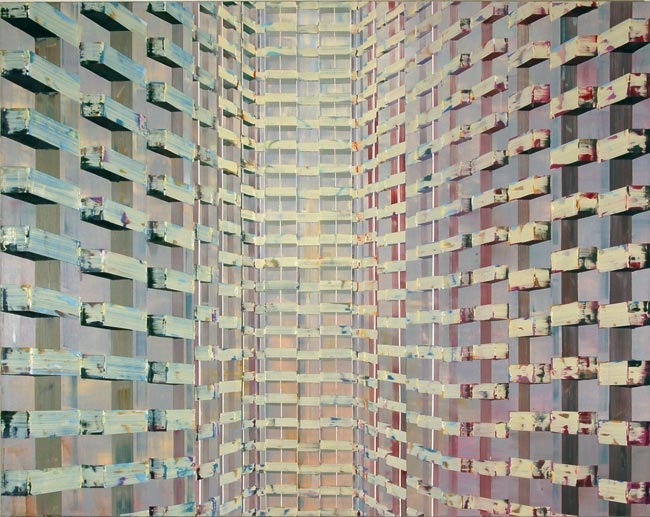Driss Ouadahi‘s large-format canvases depict the shells of buildings on the periphery of Algiers as well as those found in Paris’s suburbs. Symptomatic of lost ideals of the social habitat dating back to the 60’s and the 70’s, these paintings reflect the successes and defeats of modernist utopias. Notions of progress, hygienic conceptions, and the desire to make “machines à vivre” out of these buildings have repeatedly been swayed by reality and time. However, what have been left most are the people. Where are they hiding in these arrogant dwellings?
The architecture itself affects our feelings and behavior, leading in some instances to violence. However, Ouadahi’s paintings refrain from explicitly denouncing, preferring instead to portray the essence of these housing units.
Neighborhood and To the Ground are composed of identical combinations of windows and architectural structures. But the artist manages to confront within the same work narrowness with expanse, emptiness with abundance and monotony with diversity. His application of paint is both emphatic and sensual, subtly deviating from any merciless uniformity. Though, a feeling of claustrophobia is operated by the standardized context and the seemingly monochrome white tone. The feeling of vertigo accompanies the general claustrophobic atmosphere; the ground is pulled away from our feet.
The artist also evokes the watched element of the panopticon(the ring-shaped building divided in cells with large windows set in it), inducing the prison-like aspect of such constructions. But Driss Ouadahi doesn’t imply any clear statement against this type of architecture, failing governments or such; his aim is to give the viewers the space to project their own imagination, made of their experiences, sensations and reflexions.



Follow us on: